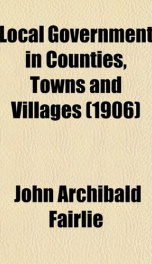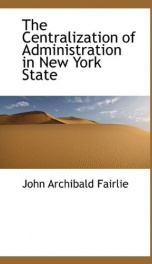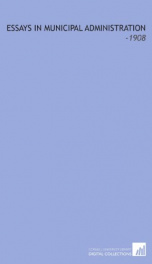local government in counties towns and villages

Purchase of this book includes free trial access to www.million-books.com where you can read more than a million books for free. This is an OCR edition with typos. Excerpt from book: CHAPTER IV GENERAL, CHARACTERISTICS In all of the states and organized mainland territories of the United States, the major district for purposes of local administration is that known, with a single exception, as the county. There are larger districts for the election of members of congress and the state legislatures and judges of the higher courts, but these officials belong to the national and central state governments, while the judges carry out their functions in direct connection with the county organization. The exception to the term county is in Louisiana, where the corresponding districts are known as parishes. Indian reservations are usually distinct districts, outside of the county system, and under the direct control of the national government. Before examining the administrative organization and functions of counties, it is important to note some of the general characteristics of this district, such as the methods of formation and the social factors which underlie the political structure. A county is one of the civil divisions of a state or territory for judicial and political purposes, and at the same time a district of a quasi-corporate character for purposes of local civil administration. Counties are created by the sovereign power of the state, andmay be established without the consent of the inhabitants. Sometimes new counties are created and existing counties are recognized by the state constitution; and in such cases there are no restrictions on the power to create. Ordinarily the legislature has power to establish counties and may do so without express grant of authority. In the North-Atlantic group of states and some others, this power is not limited by the state constitutions; and in these states the legislature may create new counties, divide or ...
Info about the book
Author:
Series:
Unknown
ASIN:
B005986KAM
Rating:
3.5/5 (1)Your rating:
0/5
Languge:
English
Users who have this book
Users who want this book
What readers are saying
What do you think? Write your own comment on this book!
write a commentif you like local government in counties towns and villages try:
Do you want to exchange books? It’s EASY!
Get registered and find other users who want to give their favourite books to good hands!





